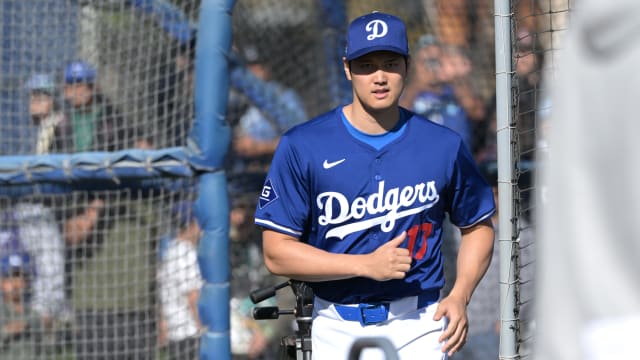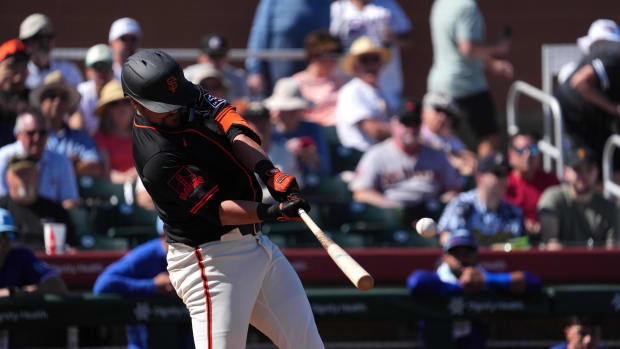Top MLB Candidates Due for Contract Extension Before Opening Day
Welcome to Extension Season, which the Pittsburgh Pirates kicked off by signing pitcher Mitch Keller to a five-year, $77 million extension.
The contract for Keller (25–38, 4.71 ERA, 91 ERA+) gives a barometer for someone like Brady Singer of the Kansas City Royals (27–31, 4.49, 98), who has a like number of innings and rate stats. The difference: Keller trended up last season.
That’s the main bet with extensions: saving money by paying up front for assumed growth. For the player, it means security without the distraction of year-to-year valuations.
Extension Season typically lasts between now and Opening Day. Last Extension Season saw deals for Washington Nationals catcher Keibert Ruiz, Arizona Diamondbacks outfielder Corbin Carroll, San Diego Padres infielder Jake Cronenworth, Cleveland Guardians second baseman Andrés Giménez, Chicago Cubs infielder Nico Hoerner and others.
These deals typically buy out arbitration years and at least one year of free agency. Many come with years of club options, which buys some back-end control for the club at the price of the player getting security.
You don’t see many players entering their platform season to free agency signing extensions. The logic: If you’re six months away from a free market auction, might as well wait.

After an exhilarating rookie season in Cincinnati, De La Cruz could be in line for a contract extension.
Katie Stratman/USA TODAY Sports
With that in mind, I identified six players I believe to be great candidates for an extension. Using their age and service time, I looked for comparable players and their long-term contracts to serve as a guide as to value.
My picks are based mostly on the risk/reward factor rather than the likelihood the extensions will happen. Think of extensions as growth stocks; these are good players to bet on long term. I eliminated likely free agents-to-be like Juan Soto of the New York Yankees, Pete Alonso of the New York Mets and Corbin Burnes of the Baltimore Orioles.
1. Gunnar Henderson, Orioles (Age: 22. Service years: 1+)
Comp: Bobby Witt Jr., Royals (23, 2): 11 years, $288.7 million.
Henderson is a safe bet because of his rare skills: He has size, speed, power, bats left-handed and is athletic enough to play shortstop. You want projections? He is Corey Seager with speed. Last season Henderson hit 28 home runs, the most ever by a left-handed-hitting shortstop at age 22 or younger, eclipsing the previous high of 26—by Seager in 2016. Even with three seasons shortened by injuries and COVID-19, Seager will have earned $226 million from ages 22 to 33. Adjusting for inflation, that’s $298 million.
2. Adley Rutschman, Orioles (26, 2).
Comp: Buster Posey, Giants (23, 2+): Nine years, $167 million.
Well, now. Nothing like new ownership in Baltimore being tested right away as far as long-term commitments.
Rutschman has the highest WAR of any catcher after his first two seasons (9.6), well ahead of Russell Martin, the previous quick starter (7.6). Posey signed his extension at age 23 in March 2013, coming off an MVP season. Adjusting for inflation, that’s a $224 million comp for Rutschman, who has the plate discipline, defense, work ethic and unselfishness that makes an extension an easy call.
3. Will Smith, Dodgers (28, 4+)
Comp: J.T. Realmuto, Phillies (29, FA): Five years, $115.1 million.
With a reliable profile like that of Rutschman, Smith is another easy extension candidate. He is signed for this season at $8.5 million. Let’s assume his sixth service year is worth $12 million and his free agent years are valued at $20 million. Only three catchers have earned an AAV higher than $20 million: Realmuto ($23.1 million), Joe Mauer ($23 million) and Salvador Pérez ($20.5 million). That’s a five-year, $92 million minimum.
4. Zac Gallen, Diamondbacks (28, 4+)
Comp: Logan Webb, Giants (27, 4+): Five years, $90 million.
Pitchers can be risky. Most March extensions go to position players. They tend to be more reliable and healthier. But like Webb, Gallen is the rare young pitcher with enough of a track record and pitch-making characteristics to bet on long-term reliability. Both have clean, athletic deliveries without max effort or velocity. Both are strike-throwers. Think David Cone, Mike Mussina and Sonny Gray. Based on these numbers, Gallen can use Webb as his floor:
| W–L | ERA | ERA+ | FIP | K:BB | |
|---|---|---|---|---|---|
Gallen | 39–31 | 3.21 | 133 | 3.47 | 3.57 |
Webb | 42–32 | 3.40 | 121 | 3.17 | 3.88 |
5. Elly De La Cruz, Reds (22, <1)
Comp: Corbin Carroll, Diamondbacks (22, <1): Eight years, $111 million.
With De La Cruz’s superlative skills—98th percentile or better in speed, arm strength and max exit velocity—it’s easy to forget he was a below average offensive player last season (89 OPS+ over 427 plate appearances). His strikeout rate (34%), chase rate (33%), weakness from the right side (.184/.237/.263) and defensive footwork all need plenty of work, which is not unusual for someone who reached the big leagues at 21.
More alarmingly, De La Cruz did not adjust back to the league after opponents realized his holes and his propensity to chase. After a 29-game burst on the scene (.325/.363/.524), De La Cruz slashed .192/.271/.353 over his final 69 games. The only worse hitters who saw at least 1,000 pitches after July 8 were Giancarlo Stanton (.181) and Trent Grisham (.185).
Here’s what those numbers mean: The Cincinnati Reds should try now to get him extended. Cruz has the skills to break out this year the way Witt did last season, pushing the price tag much higher. Here is a look at how Carroll, Witt and Cruz compare in their rookie seasons and what kind of improvement may be in store for Cruz:
| Chase Rate Year 1 | Chase Rate Year 2 | Whiff Rate Year 1 | Whiff Rate Year 2 | Adjustment | |
|---|---|---|---|---|---|
Carroll | 26.4% | 28% | 28.8% | 21.5% | Put more balls in play |
Witt | 34.7% | 30.6% | 25.2% | 22.8% | 21st in cutting chase rate |
De La Cruz | 32.8% | TBD | 29.7% | TBD | TBD |
6. Riley Greene, Tigers (23, 1+)
Comp: Ke’Bryan Hayes, Pirates (25, 1+): Eight years, $70 million
When Hayes signed his extension in April 2022, it was the largest AAV for any player between one and two years of service time ($8.75 million). Pitchers Spencer Strider ($12.5 million) and Hunter Greene ($8.83 million) have since leap-frogged Hayes’s number, but it’s still the record for a position player in that service class and a target for Greene and the Tigers.
Greene took leaps forward last year with his exit velocity and approach, which made him a better hitter against spin. It’s exactly the kind of career path you’d expect from a hard-working, sweet-swinging young leader. Injuries have taken three months off his first two seasons (foot, leg, non-throwing elbow). A new fitness and nutrition regimen as well as moving out of center field to an outfield corner and DH should help him log his first full season and continue his upward trajectory.






































